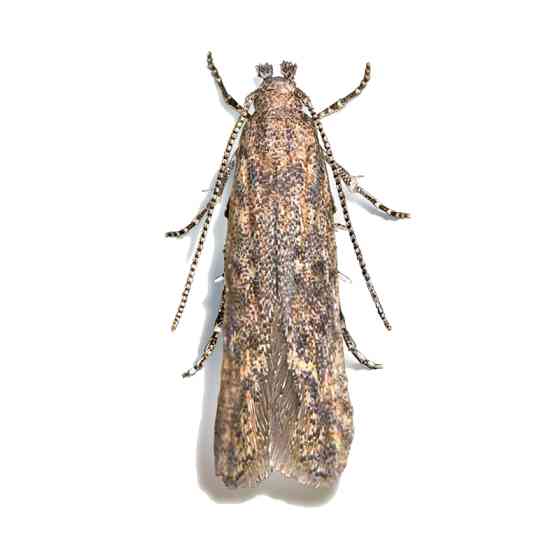Tomato Leafminer Traps
Tomato Leafminer
The total life cycle is completed in an average of 24-38 days, with the exception of winter months, when the cycle could be extended up to 60 days. Tuta absoluta has a very high reproduction capability, with up to 12 generations per year in favorable conditions.
The pest originated from South America then spread several parts of Europe, entire Africa and has now spread in India. It is a serious destructive invasive pest for tomatoes that was discovered in 2014 in a tomato-growing poly-house and fields near Pune and has since spread to other tomato-growing districts in Maharashtra. viz., Ahmadnagar, Dhule, Jalgaon, Nashik, Satara etc. If not controlled properly, the leaf miner can result in a 100 percent production loss and have a significant impact on fruit quality.

Lifecycle of Tomato Leafminer
The total life cycle is completed in an average of 24-38 days, with the exception of winter months, when the cycle could be extended up to 60 days. Tuta absoluta has a very high reproduction capability, with up to 12 generations per year in favorable conditions.
Egg: The female tomato leaf miner (Tuta absoluta) lays about 250 to 300 eggs. These eggs are small cylindrical, 0.35 mm long and its color varies from creamy white to bright yellow, gets darkened in the embryonic phase and become almost black near eclosion. Typically, Tuta absoluta deposits eggs underneath of leaves or stems and atching typically takes place after 4-6 days.
Larva: The first-instar larvae is whitish to yellowish soon after eclosion, becoming greenish or light pink in the second to fourth instars based on food susceptibility (leaflet or ripe fruit, respectively). Usually, four instars can be observed. Larval period lasts 10–15 days, this stage is responsible for crop damage. Tuta absoluta has a high reproductive potential. Larvae do not go to diapause stage while food is available. In the second to fourth instars they become greenish with a black band behind the head.
Pre-pupa: The pre-pupae stage of the tomato leaf miner is normally lighter than the feeding larvae (first to fourth instars) and develop a distinguished pink coloration on the dorsal surface.
They leave the mines and build silk cocoons on the leaflets or in the soil, according to habitat. When pupation occurs inside mines or fruit, the pre-pupae do not build cocoons.
Pupa: Pupae are obtecta with greenish coloration at first, turning chestnut brown and dark brown near adult emergence. Pupation takes place within 10 days on the leaf surface, in mines or in soil.
Adult: Adult moths of the tomato leaf miner (Tuta absoluta) are grey-brown with filiform antennae, alternating light or dark segments and recurved labial palps that are well developed. The adults are silvery brown, with silverish-grey scales . Black spots can be seen on the anterior wings. Adults are nocturnal and usually hide between leaves during the day. The pest may overwinter as eggs, pupae or adults. Adult female lays about a total of about 250 eggs during her lifetime.
Damage symptoms :
The larvae of Tuta absoluta mine the leaves producing large galleries and burrow into the fruit, causing a substantial loss of tomato production in protected and open filed cultivations. The larvae feed on mesophyll tissues and make irregular mine on leaf surface. Damage can reach up to 90%.
- The most distinctive symptoms of damage done by the tomato leaf miner (Tuta absoluta) are the blotch-shaped mines in the leaves.
- Caterpillars prefer leaves and stems, but they may also occur underneath the crown of the fruit and even inside the fruit itself.
- On leaves, the larvae only feed on mesophyll tissues, leaving the epidermis intact. In case of serious infection, leaves die off completely.
- Fruits can be attacked as soon as they are emerged but the larvae only feed on green fruits. Mining by the caterpillar causes malformations.
- Damage to fruit allows fungal diseases to enter, leading to rotting of fruits before or after harvest. Tomato plants are vulnerable from seedlings to the mature plants. The infestation can be visible on apical buds, leaves, and stems, flowers and fruits.


Management of Tuta Absoluta :
IPM strategies are being adopted worldwide to control Tuta absoluta. Various active ingredients can be applied in combination with bio-rational control tactics.
- One most promising strategy adopted worldwide is pheromone-containing lures in combination with various other means for successfully monitoring and/ or trapping the flies to keep the infestation under control.
- As per guidelines if catches in pheromone traps less than ten moths per trap per week, control treatments are recommended to be carried out mainly with bio-rational products, such as Bacillus thuringiensis and Azadirachtin.
- But if catches exceed ten moths per trap per week, additional measures are recommended to be carried out by combining bio-rational insecticides with synthetic chemical insecticides.
- For low infestation or pest population, mass trapping by combining pheromone with baited-water traps has also proven to be an effective control measure.
- Large numbers of adult males can be trapped, resulting in an imbalance in the sex ratio, which impacts the mating pattern of the pest .
- An average of 30-40 pheromone baited-water traps should be placed per hectare. Mass trapping provides an effective control measure in general for infestation.



